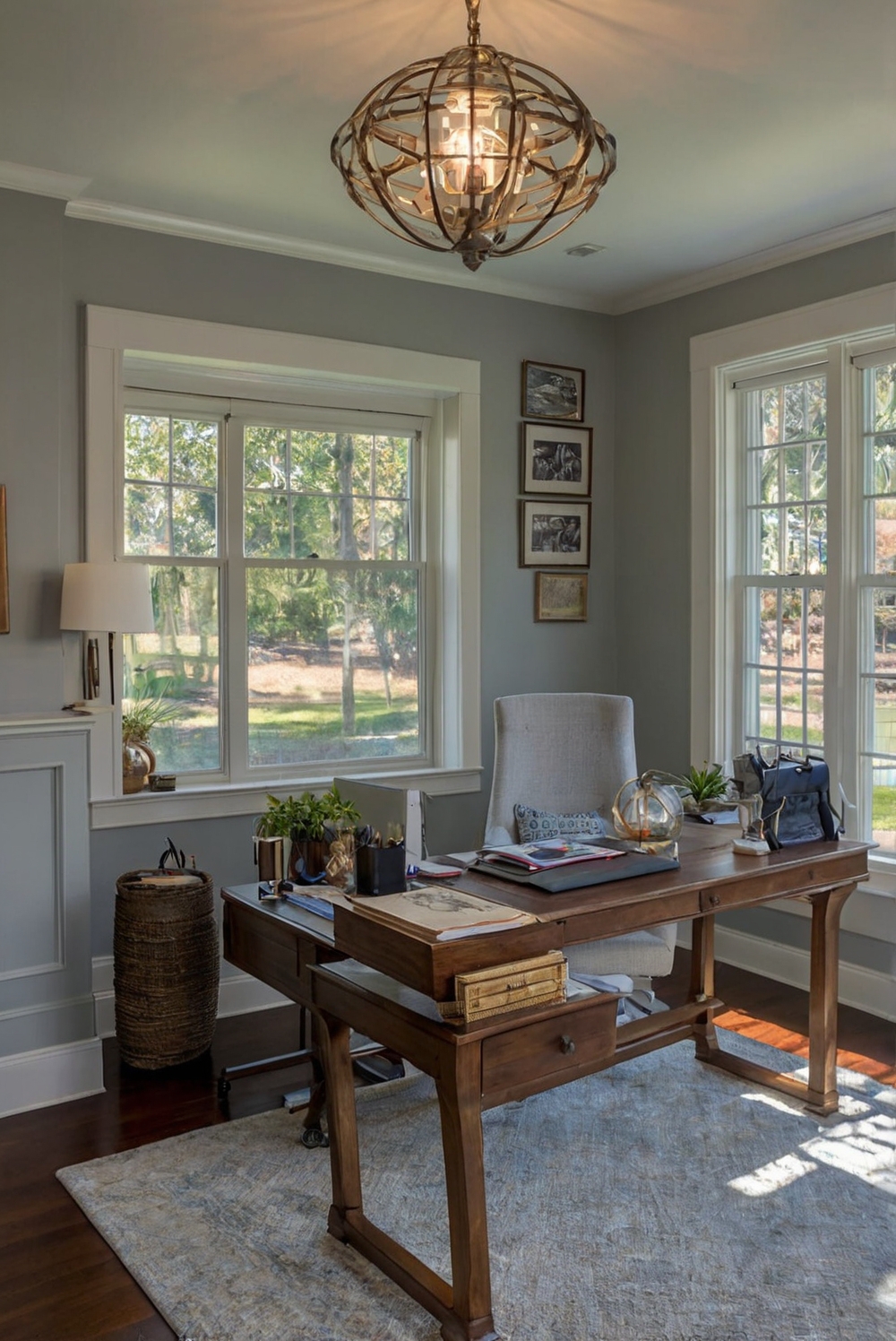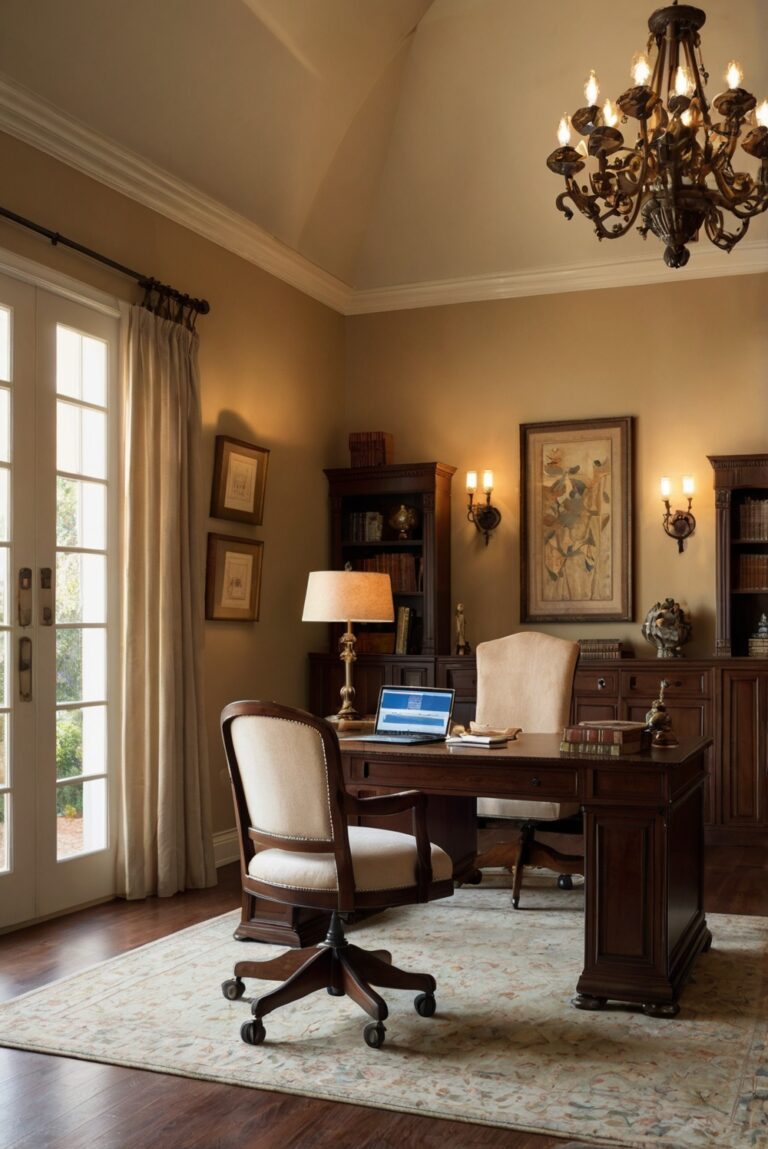What are the best practices for cleaning and maintaining office equipment in a home office?

Discover effective methods for cleaning and maintaining office equipment in a home office. Keep your workspace organized and functional with these daily interior designer routines.
What are the best practices for cleaning and maintaining office equipment in a home office?
**Answer:**
To maintain office equipment in a home office, regular cleaning and upkeep are essential. Start by dusting your equipment weekly to prevent dirt buildup. Use a microfiber cloth and a gentle cleaner suitable for electronics. Organize cables neatly to avoid tangling and confusion. Consider using cable management tools for a tidy workspace. Additionally, periodically check for updates and perform maintenance tasks recommended by the manufacturer. Properly store supplies and equipment in designated areas to maintain order and accessibility. By following these practices, you can ensure the longevity and efficient performance of your office equipment.
– **Home Decorating**
– **Home Interior**
– **Home Interior Design**
– **Space Planning**
– **Interior Design Space Planning**
– **Decorating Interiors**
– **Designer Kitchen**
– **Kitchen Designs**
– **Living Room Interior**
– **Designer Wall Paint**
– **Primer Paint for Walls**
– **Color Matching Painting**
– **Paint Color Match**
– **Home Paint Colors**
Regular Cleaning:
Regular cleaning is essential to ensure the longevity and optimal performance of office equipment in a home office. Dust and dirt can accumulate on devices such as computers, printers, and keyboards, leading to malfunctions and reduced efficiency. It is important to dust and wipe down equipment regularly using a soft, lint-free cloth and appropriate cleaning solutions.
Proper Ventilation:
Proper ventilation is crucial for office equipment, especially computers and printers, to prevent overheating. Make sure the devices are placed in well-ventilated areas and not enclosed in tight spaces. Dust accumulation can block ventilation and cause the equipment to overheat, leading to potential damage.
Unplug Before Cleaning:
Before cleaning office equipment, always remember to unplug them from the power source. This is to ensure safety and prevent any electrical mishaps. Cleaning equipment while they are still plugged in can be dangerous and may damage the devices.
Use of Proper Cleaning Tools:
When cleaning office equipment, it is important to use the appropriate cleaning tools to avoid causing damage. For example, use a soft, lint-free cloth to wipe down screens and surfaces, and avoid using abrasive materials that can scratch the equipment. Additionally, use cleaning solutions that are safe for electronics to prevent any damage to the devices.
Regular Maintenance Checks:
In addition to regular cleaning, performing maintenance checks on office equipment is crucial to identify any potential issues early on. Check for loose cables, damaged components, or any unusual noises or behaviors. Addressing these issues promptly can prevent further damage and extend the lifespan of the equipment.
In conclusion, maintaining office equipment in a home office requires regular cleaning, proper ventilation, and the use of appropriate cleaning tools. Additionally, remember to unplug devices before cleaning them and conduct regular maintenance checks to identify and address any issues early on. By following these best practices, you can ensure that your office equipment remains in optimal condition and functions efficiently for years to come.
1. Why is it important to regularly clean and maintain office equipment in a home office?
Regular cleaning and maintenance of office equipment in a home office are crucial for ensuring the efficiency and longevity of the devices. Dust, dirt, and debris can accumulate on equipment, leading to malfunctions, overheating, and reduced performance. By cleaning and maintaining the equipment regularly, you can prevent these issues and prolong the lifespan of your devices.
2. What are the recommended cleaning methods for different types of office equipment?
Different types of office equipment require specific cleaning methods to ensure their proper maintenance. For example, keyboards and mice can be cleaned using compressed air or disinfectant wipes, while monitors and screens should be wiped with a microfiber cloth. Printers and scanners may require more thorough cleaning with a vacuum cleaner or special cleaning solutions. It’s essential to follow the manufacturer’s guidelines for cleaning each device to avoid damage.
3. How often should office equipment be cleaned and maintained in a home office?
The frequency of cleaning and maintenance for office equipment in a home office depends on the usage and environment. As a general rule, it’s recommended to clean and maintain equipment at least once a month to prevent dust buildup and ensure optimal performance. Devices that are used frequently or in dusty environments may require more frequent cleaning, while less-used equipment can be cleaned less often.
4. What are the common mistakes to avoid when cleaning office equipment in a home office?
When cleaning office equipment in a home office, it’s essential to avoid common mistakes that can damage the devices. Some common mistakes to avoid include using harsh chemicals that can corrode or discolor equipment, using excessive moisture that can seep into the devices and cause electrical damage, and using abrasive materials that can scratch or wear down the surfaces of the equipment. It’s crucial to use gentle cleaning methods and suitable cleaning products to protect your office equipment.
5. What are some tips for maintaining office equipment in a home office?
In addition to regular cleaning, there are several tips for maintaining office equipment in a home office to ensure its longevity and performance. These tips include keeping equipment away from direct sunlight and heat sources to prevent overheating, using surge protectors to safeguard devices from power surges and electrical damage, organizing cables and cords to prevent tangling and tripping hazards, and updating software and drivers regularly to ensure compatibility and security. By following these maintenance tips, you can extend the life of your office equipment and optimize its functionality.






